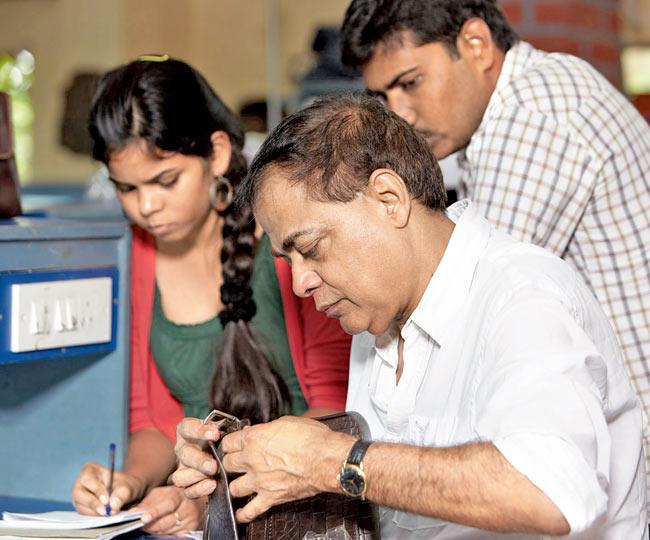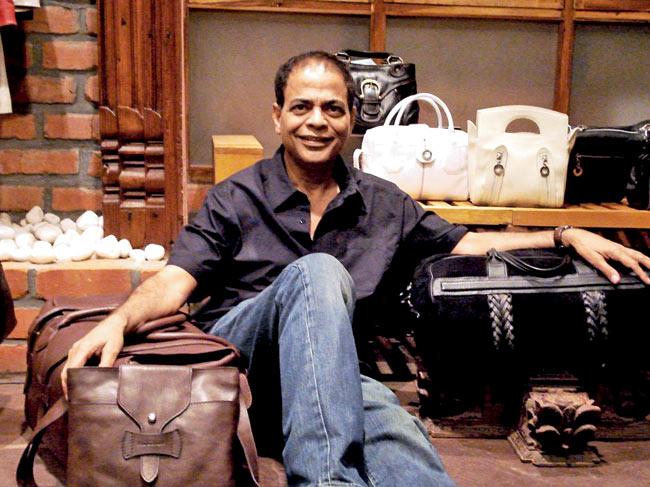The designer talks to Anu Prabhakar about his childhood in Puducherry, living as a hippie in America and why Indian men were considered fuddy-duddies once upon a time

Dilip Kapur

Dilip Kapur’s first job was not at a leather company. Or even a fashion house, for that matter. The distinction of tapping into Kapur’s potential and hiring him years before he went on to create his own fashion label lies with a New York-based restaurant, where he was hired as a full-time dishwasher. Not that it dampened the then 17-year-old’s spirits.
ADVERTISEMENT

“I was so good at my work that the owner gave me an apartment to live in. The bigger deal was that he allowed me to go out with his daughter,” remembers the entrepreneur, over a telephone interview. “I realised that I was smart at my work and the fact that it was a dirty job didn’t put me down,” he adds. It was truly the most unusual of beginnings.

Dilip Kapur at the Hidesign factory in Puducherry with his workers
Life in an ashram
Born in Delhi in the year 1948, Kapur dubs himself one of the first ‘partition babies’ (to be born immediately after the partition). The family lived in Agra, where he attended a convent school. When he was around six years old, his father decided to sell his business, give it all up and move to Sri Aurobindo Ashram in Puducherry, then a French colony. The kids were chuffed to bits, but Kapur remembers his mother’s displeasure. “My mother’s family was in total shock. To them, it was like going into exile,” he recalls. “She loved the ashram later but at first, the place was strange to her. Here was a woman who, after wearing salwar-kameezes and saris all her life, had to suddenly wear tiny shorts and a shirt, and play sports every day!”

The businessman with his creations
Buoyed by Time and other foreign publications’ articles on the United States, Kapur, then 15, left for Phillips Andover Academy, Massachusetts, on a scholarship. He was in a strange country, with eight dollars in his pocket (his father’s friend — a Stanford University professor — later gave him an extra 100 dollars). “I was a total nincompoop. But I had friends who felt sorry for me and took me home to their families. I learnt all about deodorants, aftershaves — everything that an American child had and I didn’t,” chuckles the 66-year-old. Soon, an opportunity to study at Princeton University came knocking. “Princeton was very conservative and elitist. They had clubs where you were served on the table by Afro-American waiters, all dressed in white,” he explains.
It was the 1960s — time of The Beatles and the phenomenal counterculture of the ‘60s. With the Vietnam War in full swing, the youth of America was a restless lot. “Everyone was talking about the great music that was coming out, the hippie counterculture, flower power ... we had this incredible euphoria of loving everyone,” he recalls. Incensed by America’s role in Vietnam, he became a part of radical student groups across universities, who protested against the war by seizing buildings and participating in demonstrations. “Do you know who our direct rival was? Steve Forbes. Oh, we hated him,” says Kapur of Forbes, the editor-in-chief of Forbes magazine, who didn’t oppose the war while at Princeton. “He brought out a magazine with the help of his father (the flamboyant capitalist Malcolm Forbes) and circulated it for free across all Ivy League colleges,” he adds.
Those were heady days, he continues. “We were courageous and wanted to change the world.” But after a PhD from the University of Denver and a stint at a shop that handcrafted leather bags, the designer was ready to come back home and help develop Auroville, an experimental township near Puducherry where much emphasis was placed on the goodness of nature. “I was beginning to feel very disconnected from India,” he explains.
The birth of Hidesign
In 1978, Kapur started the company (“What company? It was just me and a cobbler,” he laughs) with R25,000 and a machine. His leather bags caught the attention of foreign visitors at Auroville, who in turn took his bags to countries such as England, San Francisco and Australia. Soon, his creations created a splash in the alternative fashion market abroad. Designing for India never crossed his mind. In fact, when Hidesign opened its first Indian outlet in Bangalore in 2000, Kapur was shocked to see Indians buy his bags. “I wanted natural leather, which a lot of people thought was ugly,” he says.
When we met last year for an interview, he joked that years ago in the US, the standing joke was that you could spot an Indian man from a mile away. “All Indian businessmen wore terry cotton safari suits and carried briefcases with those number locks that would go ‘clack clack’ once you unlocked them. You wouldn’t know whether there were files or dirty clothes inside!” he had laughed. Ask him about his thoughts on fashion and Indian men today and Kapur laments that men here have a “fitness problem”. “The greatest looking men in the world are in their 40s and 50s because they take care of themselves. That is missing here. Young Indians are one of the nicest-looking people in the world. But when they enter their 30s, they go out of shape because of the ungodly hours they work. It becomes difficult for them to have a certain look and style that comes with age,” he points out.
A travel enthusiast, Kapur and his family (including four children) make it a point to travel twice a year. “It could be anywhere. This year, we went to Dordogne and Bourdon in France, and had good wine. I love books and music. I also love swimming, meditating and going for long walks with my dogs. Staying fit is very important to me — this Sunday, we played football by the beach and I scored a goal,” he laughs.
It might be easy to mistake Kapur for a flamboyant designer who, accustomed to a life of luxury, loves only the finer things in life. But his mantra in life is simple. “There is great beauty in simplicity,” says the entrepreneur. “This was something that was taught to all of us at the ashram. And I still believe in it,” he smiles.
 Subscribe today by clicking the link and stay updated with the latest news!" Click here!
Subscribe today by clicking the link and stay updated with the latest news!" Click here!







